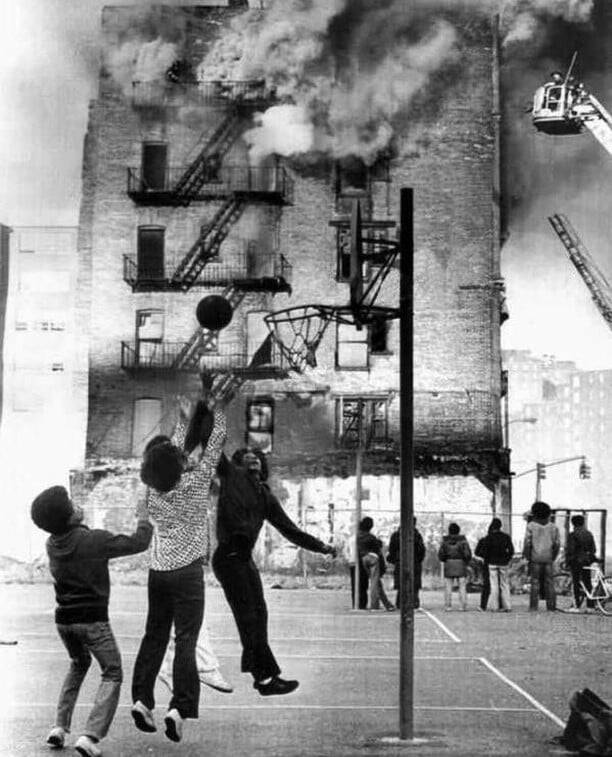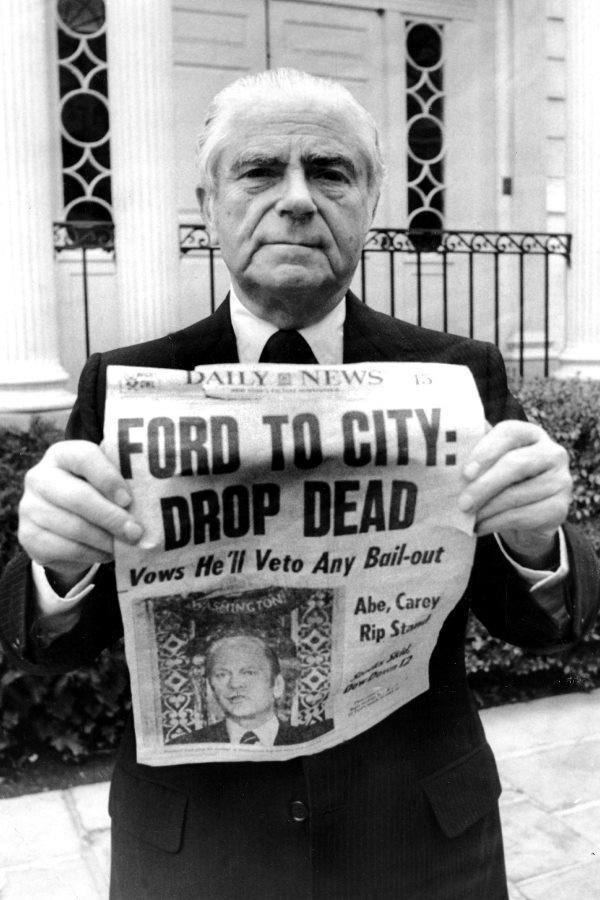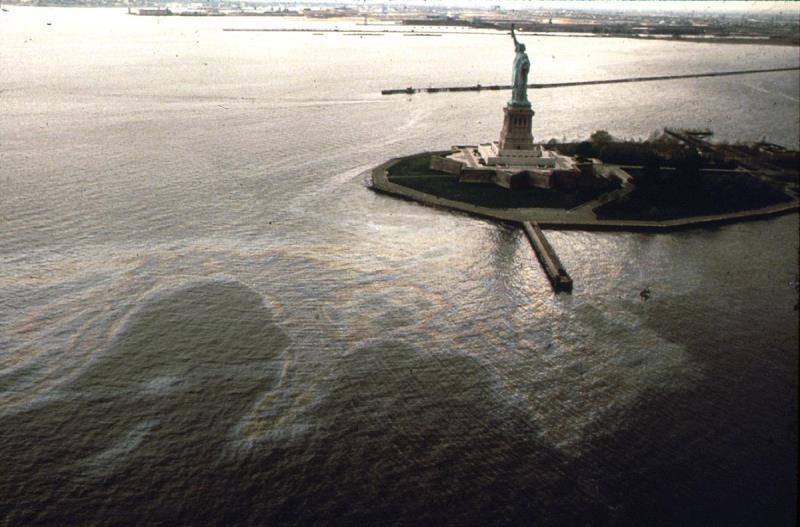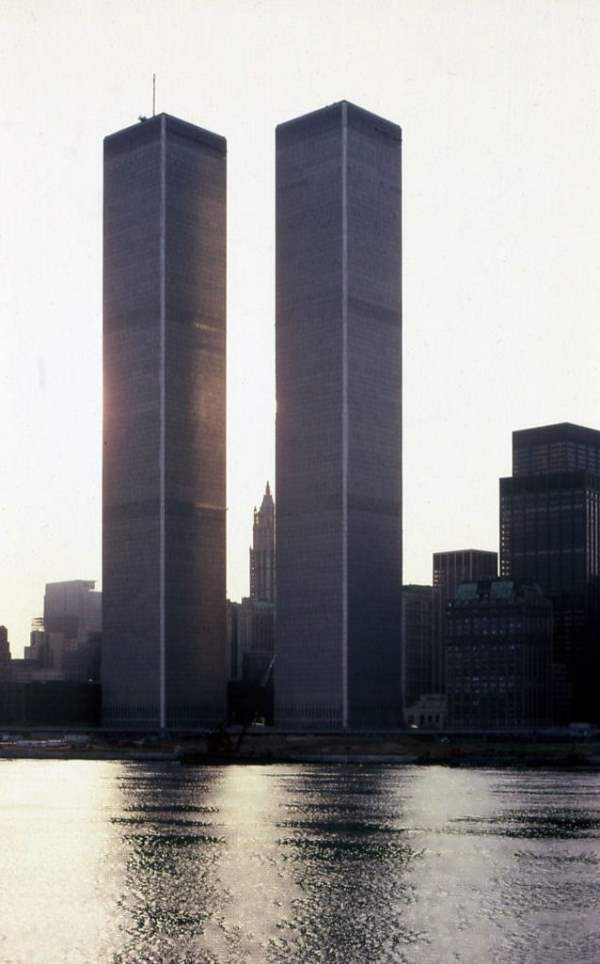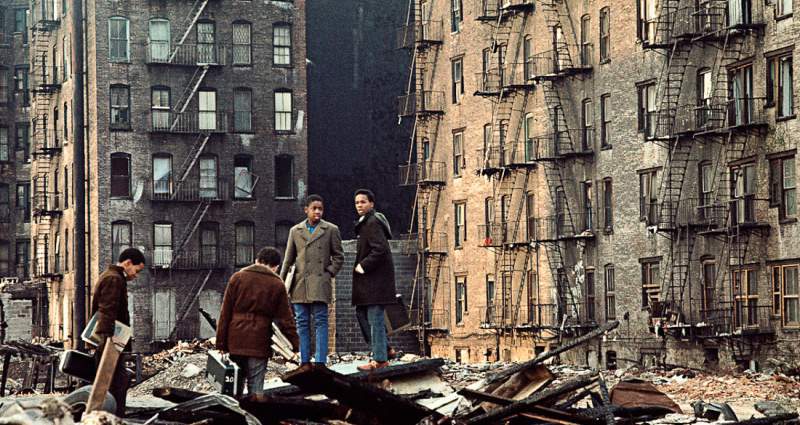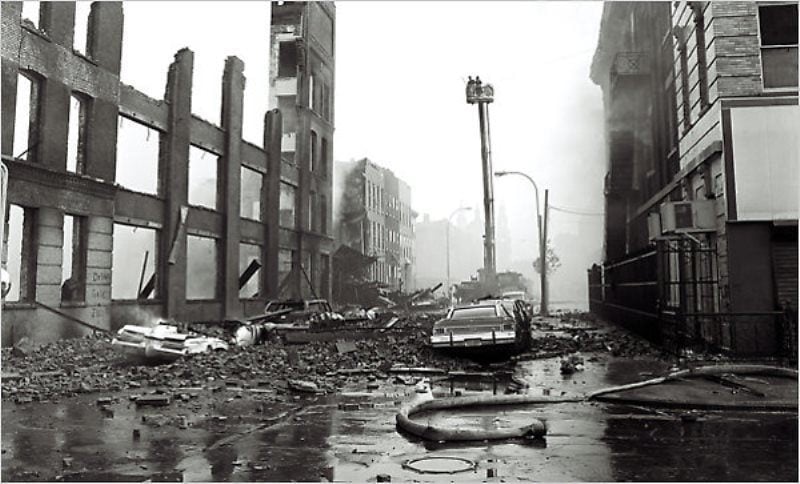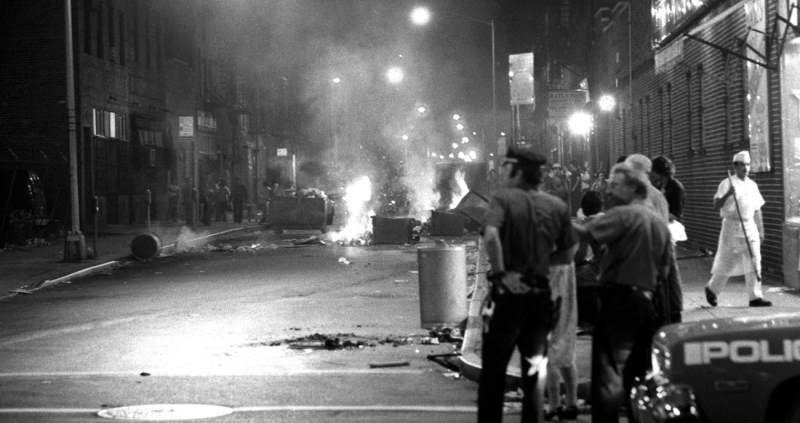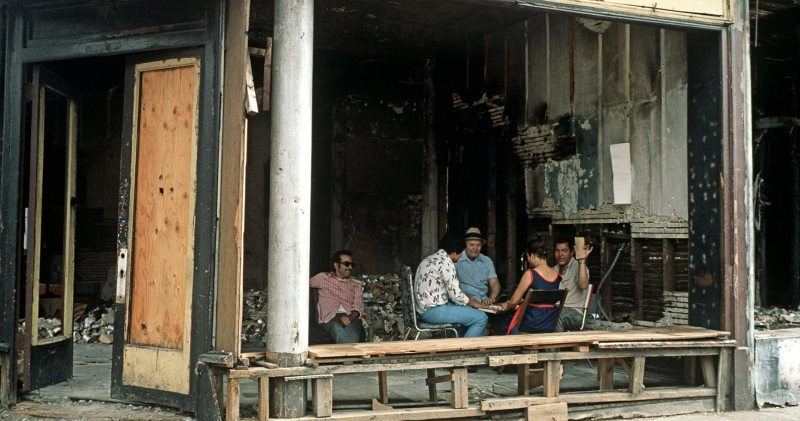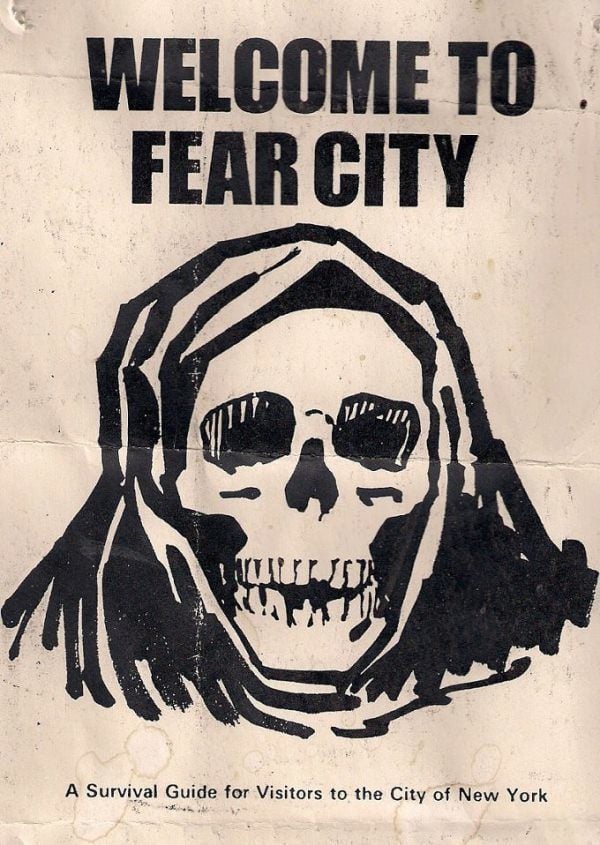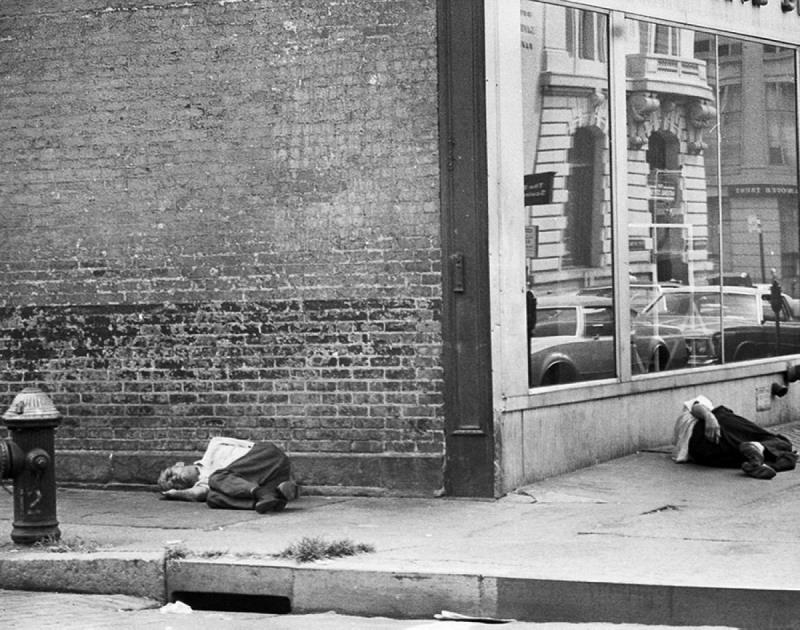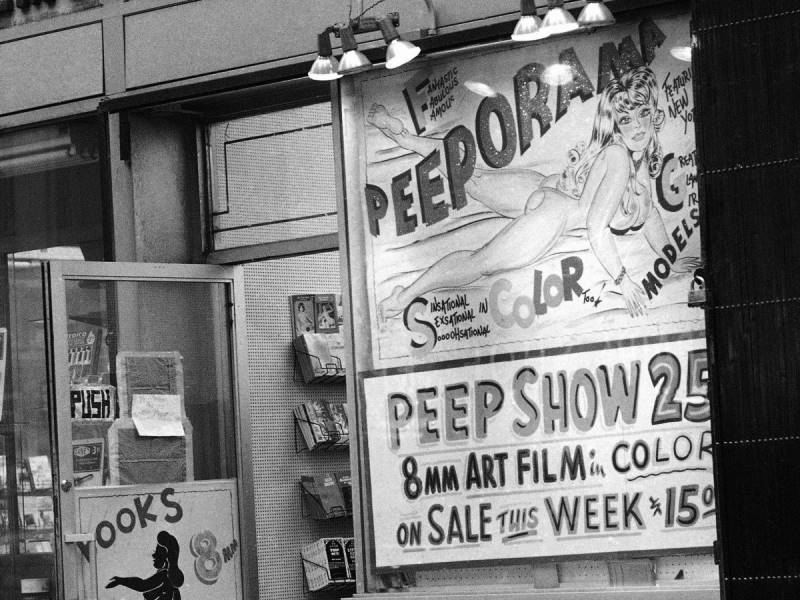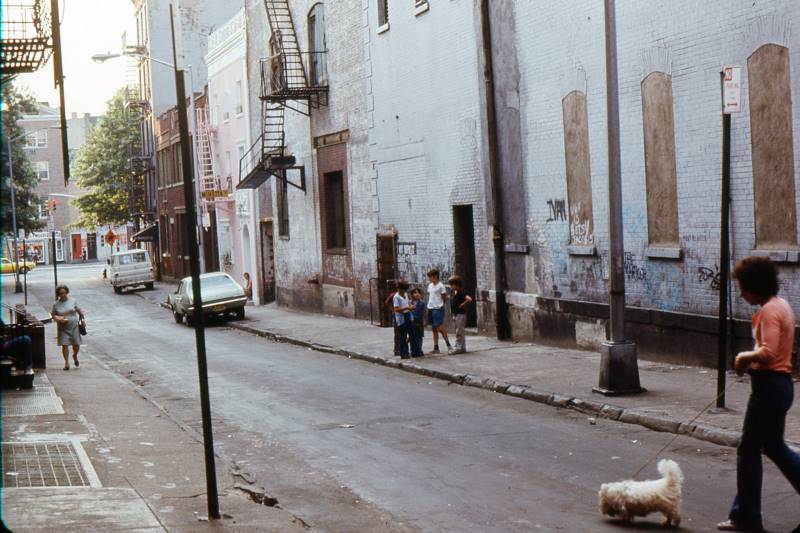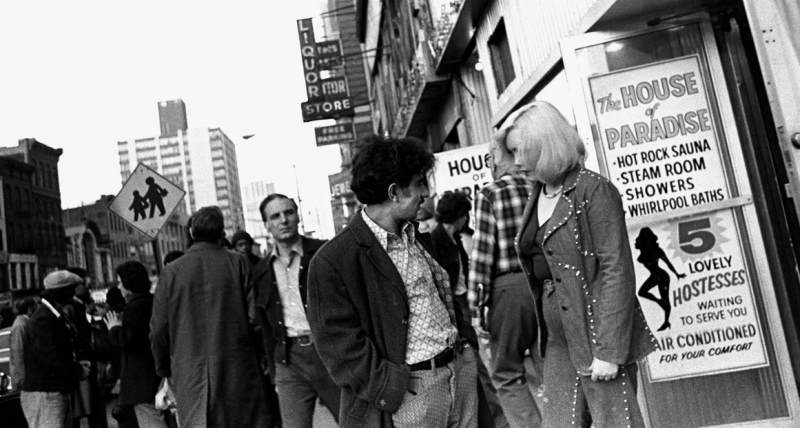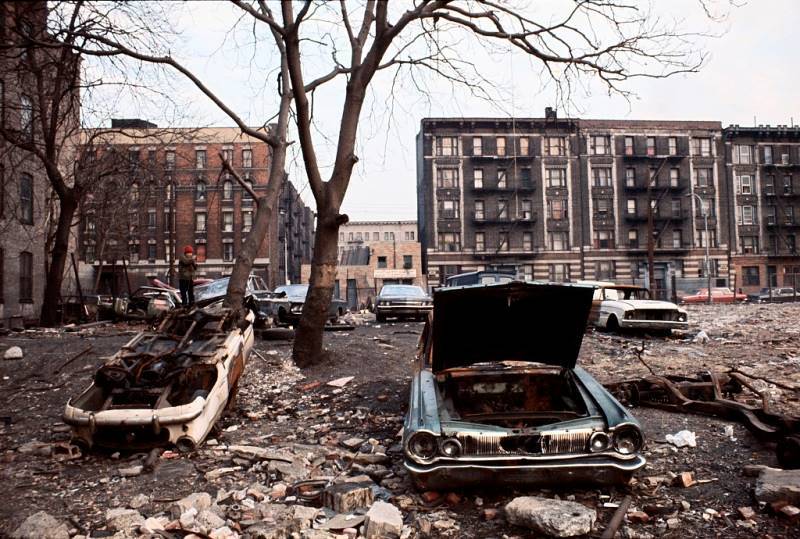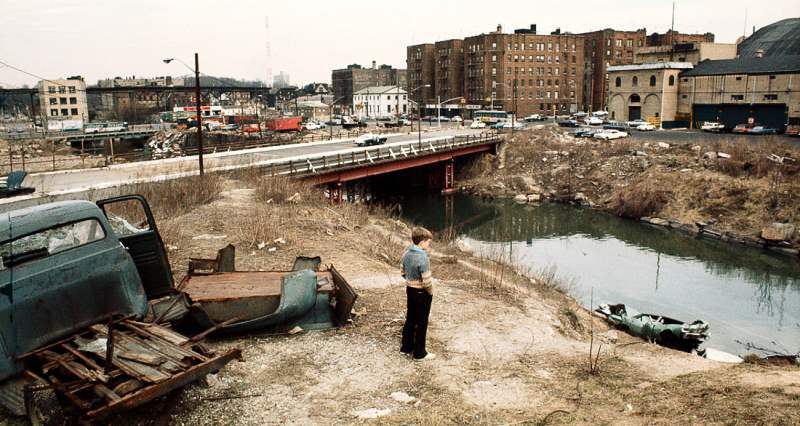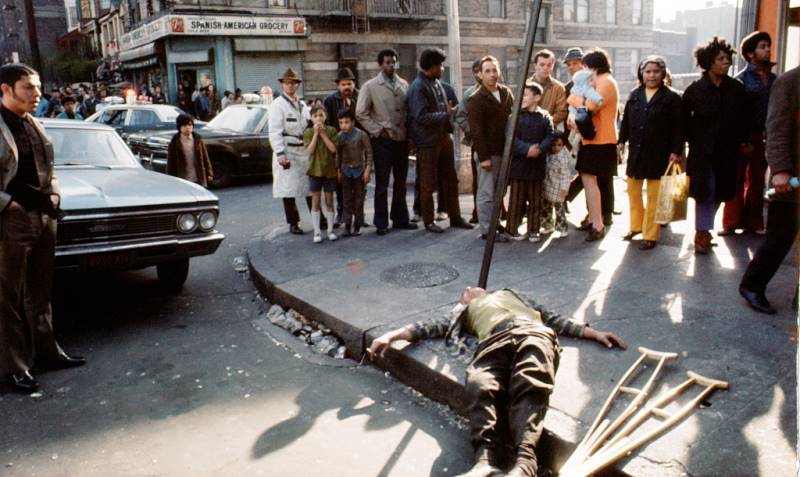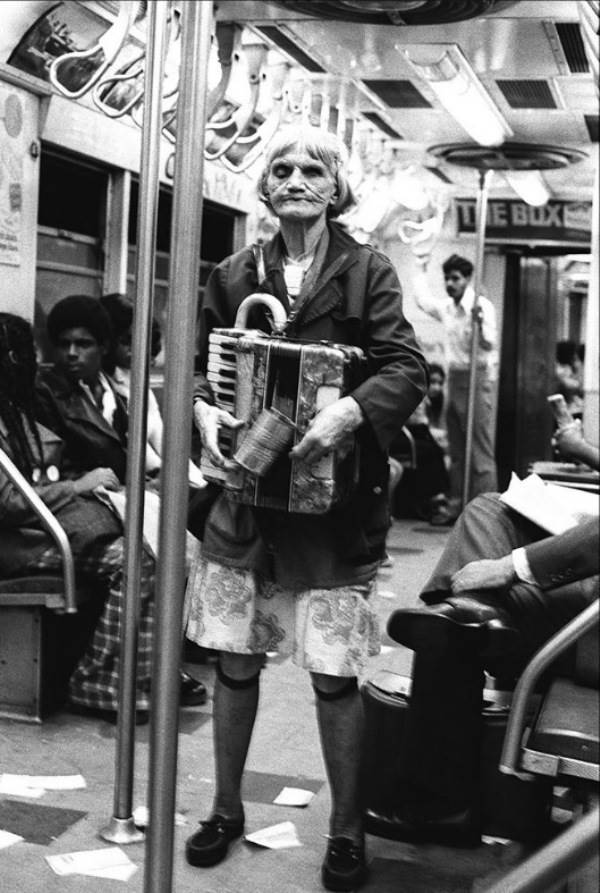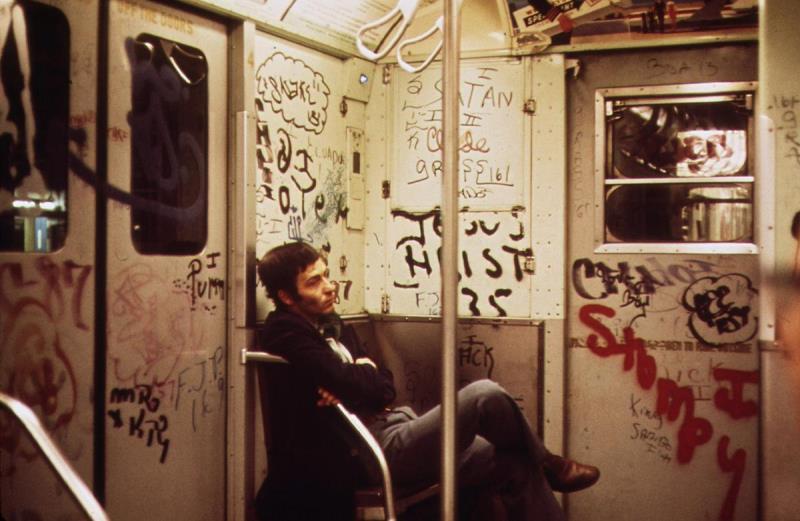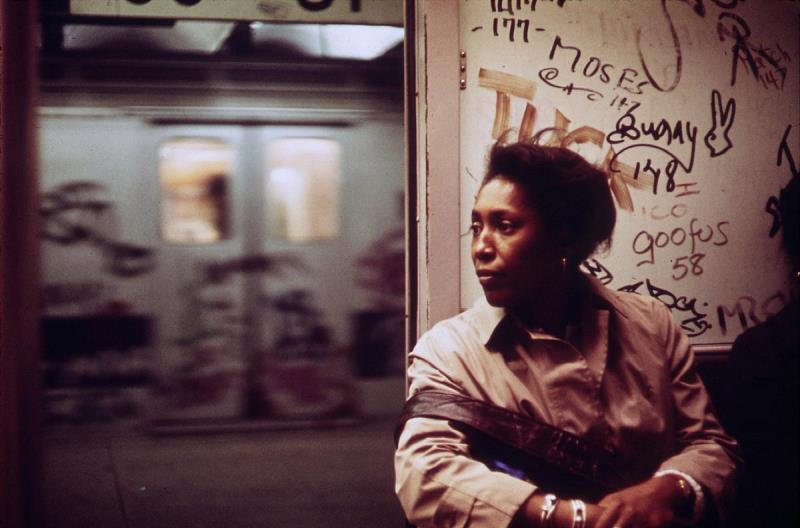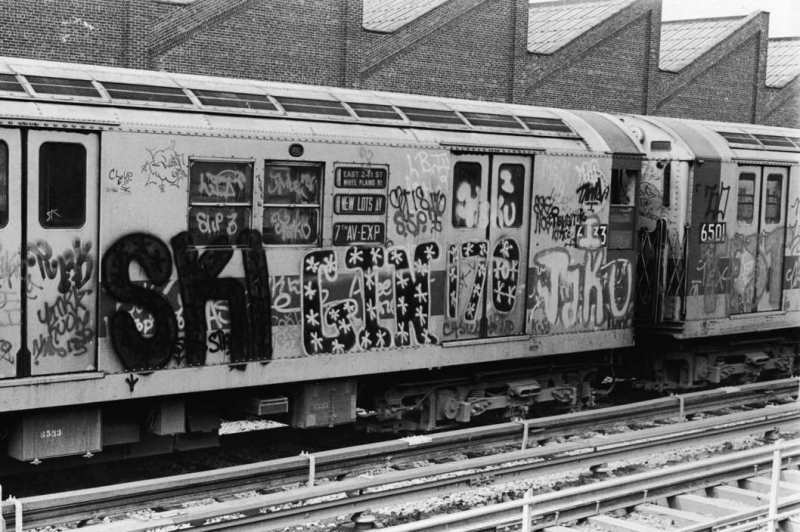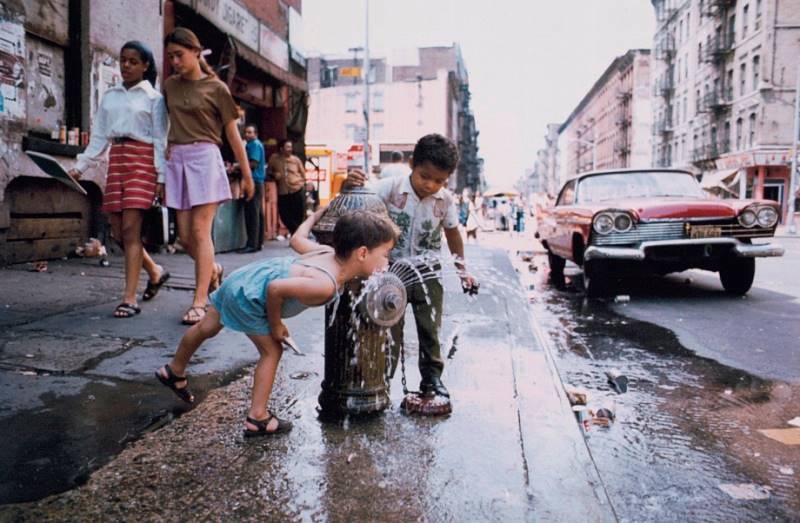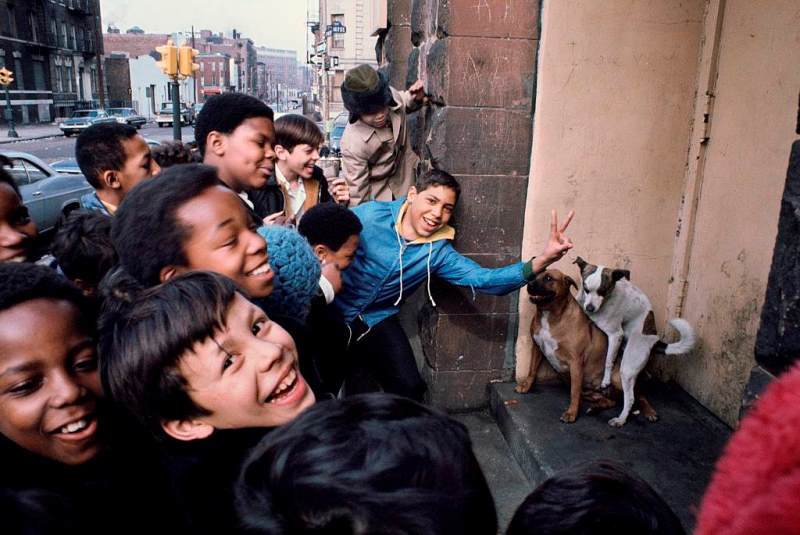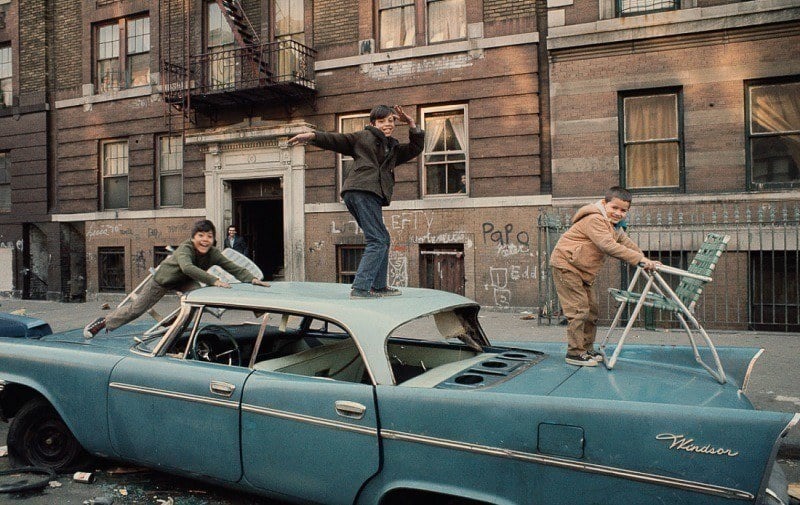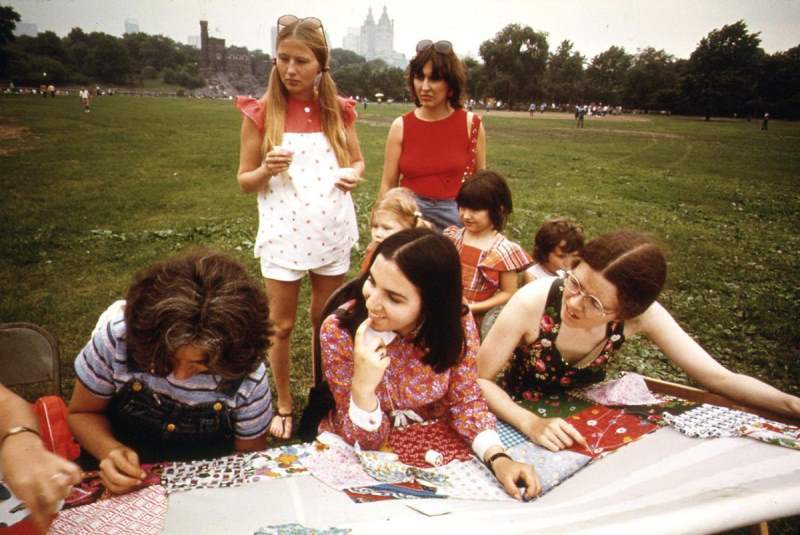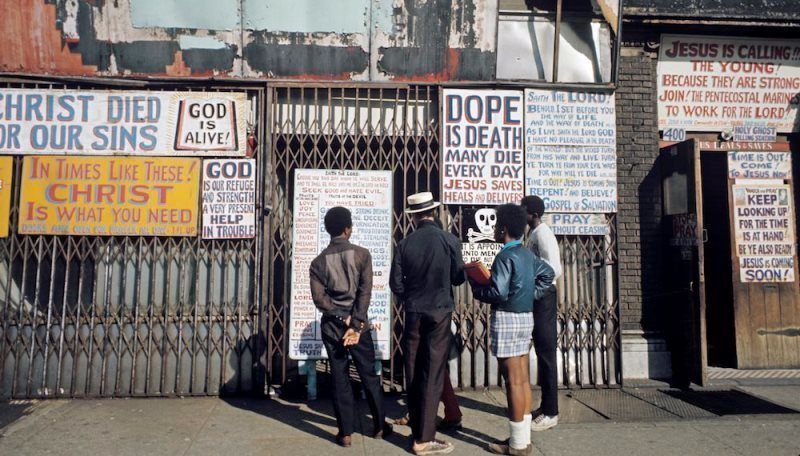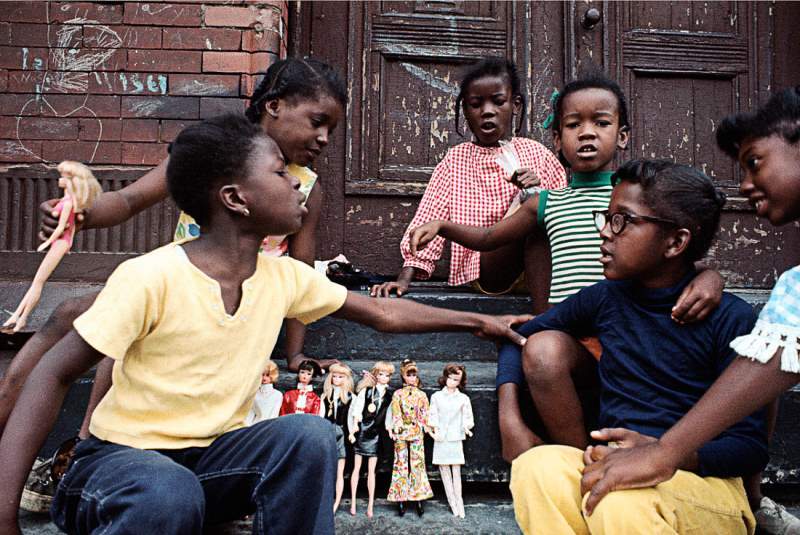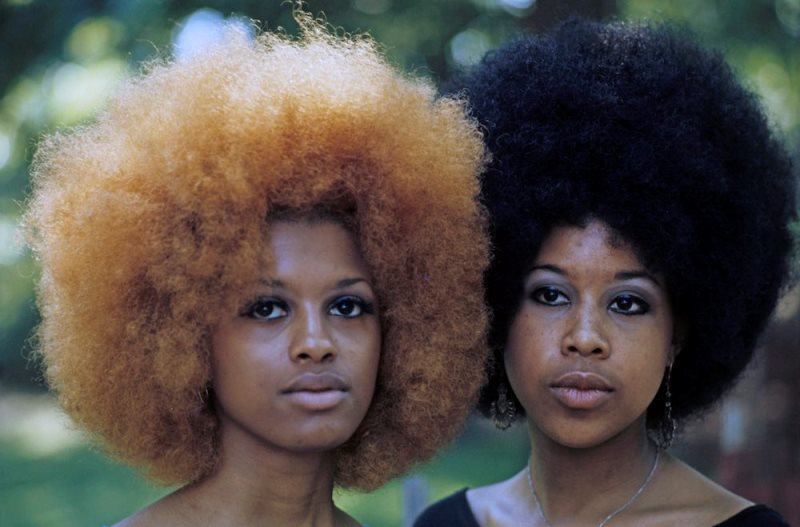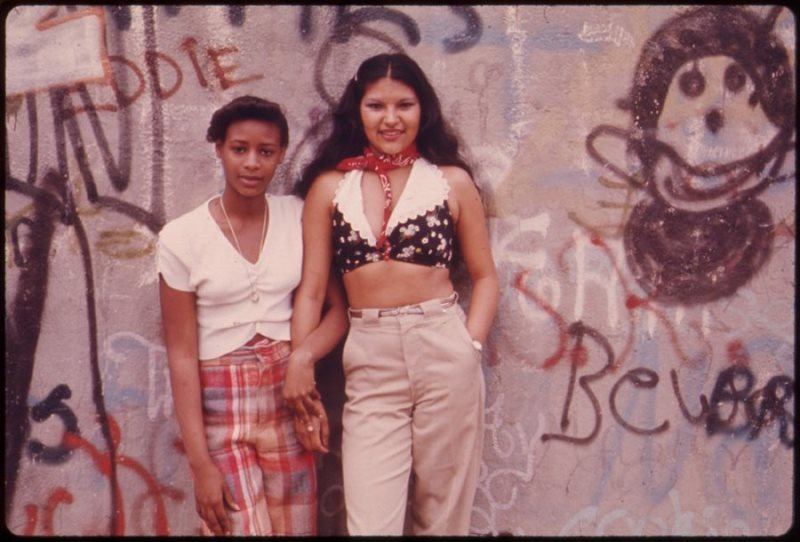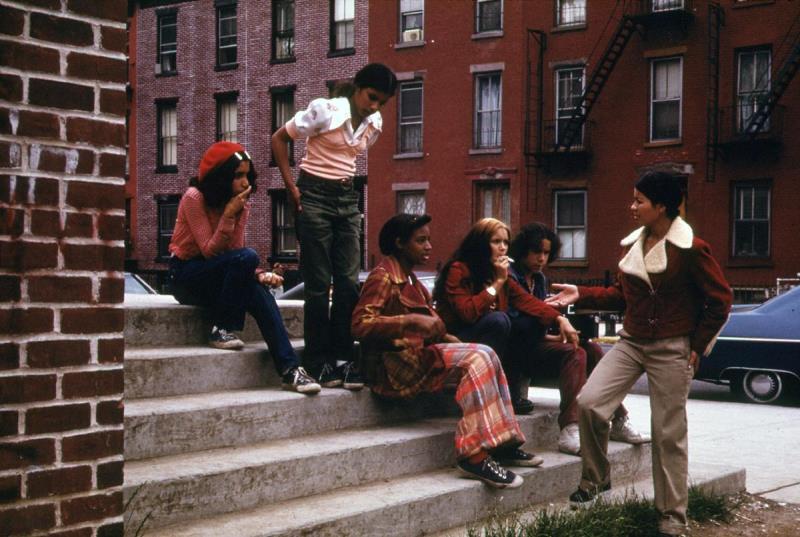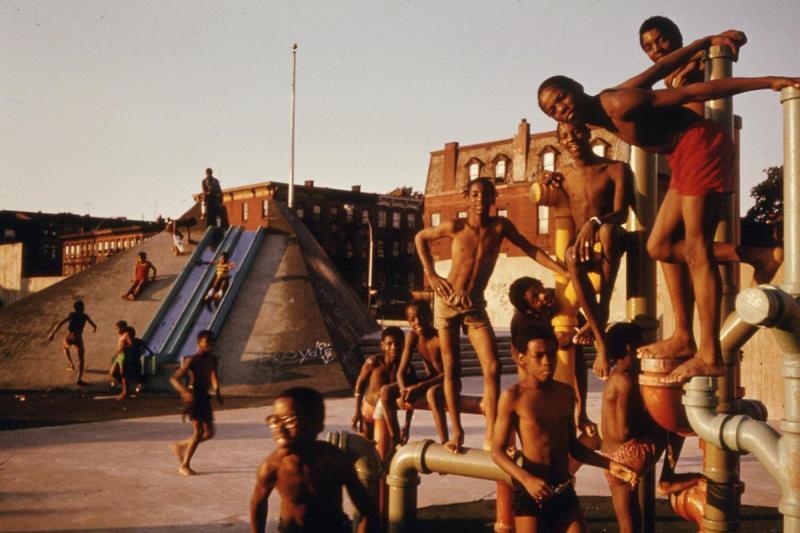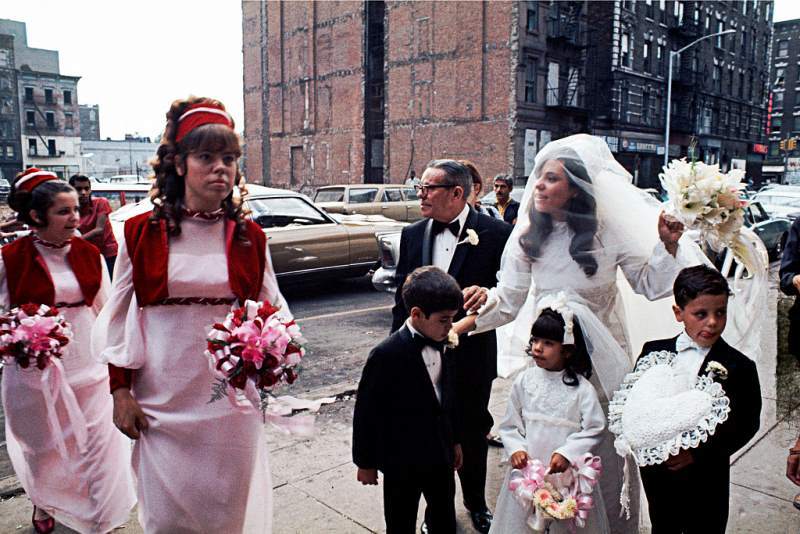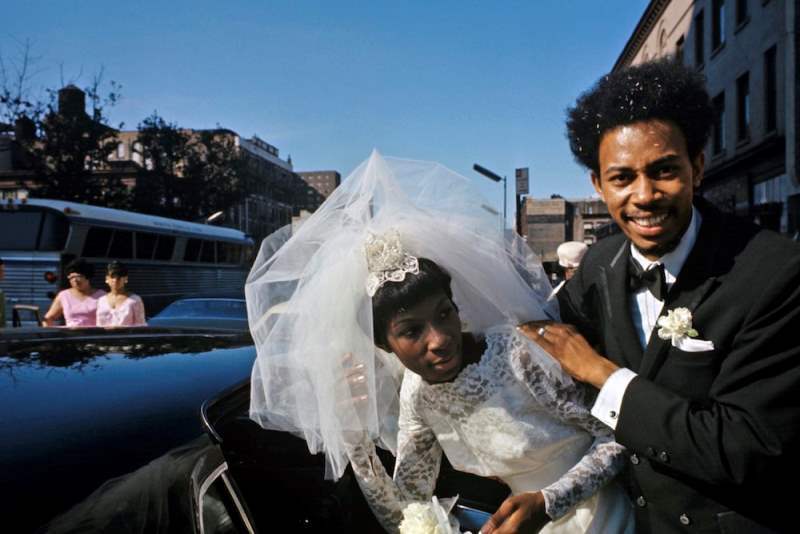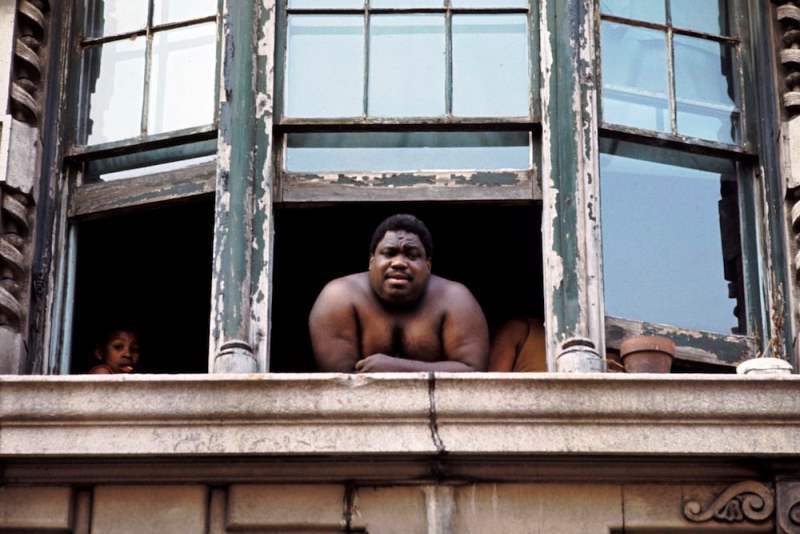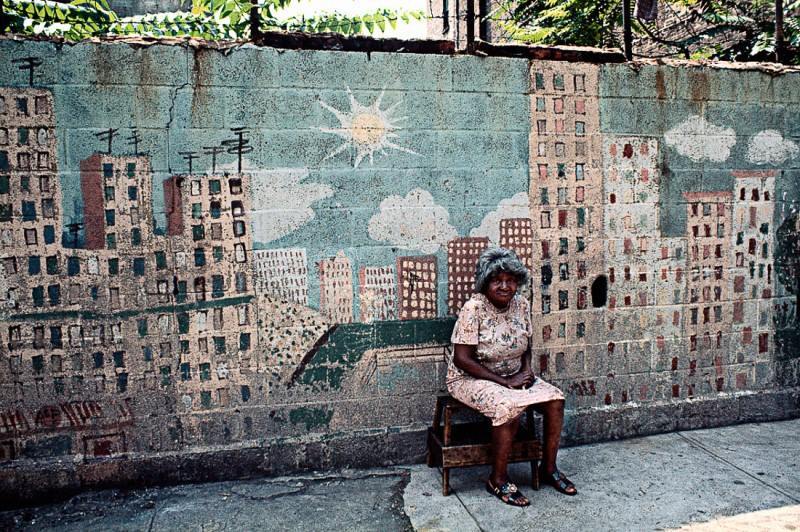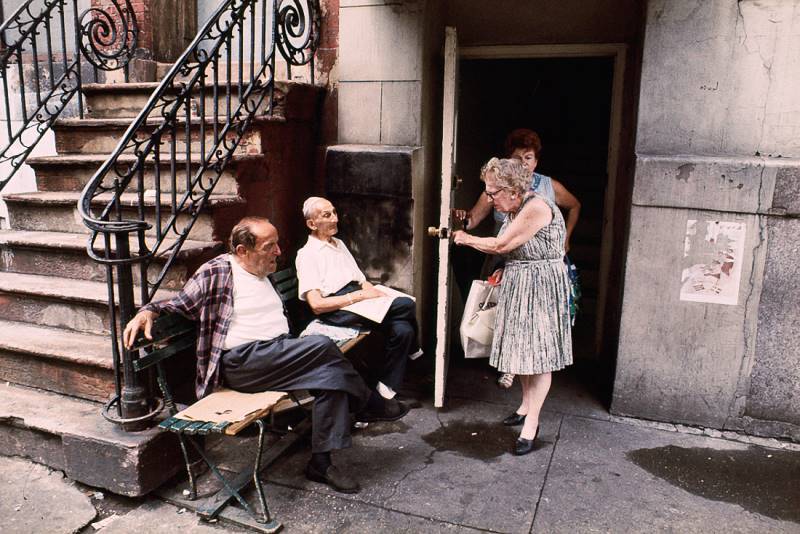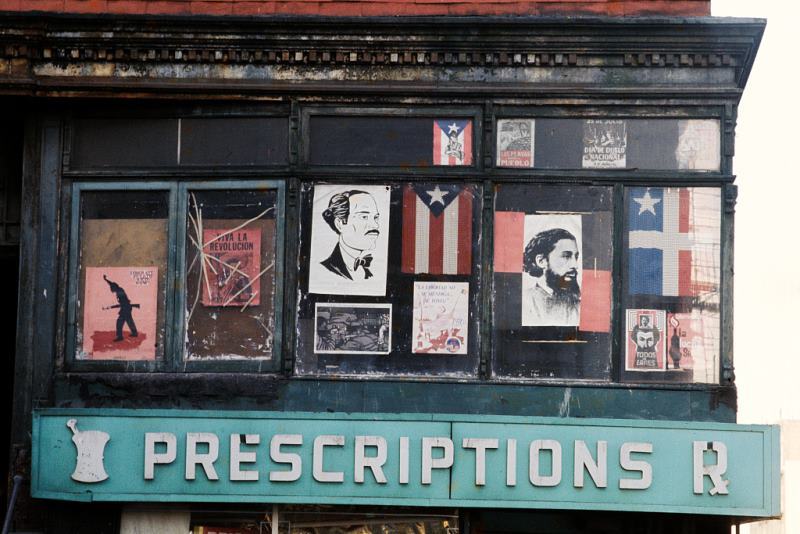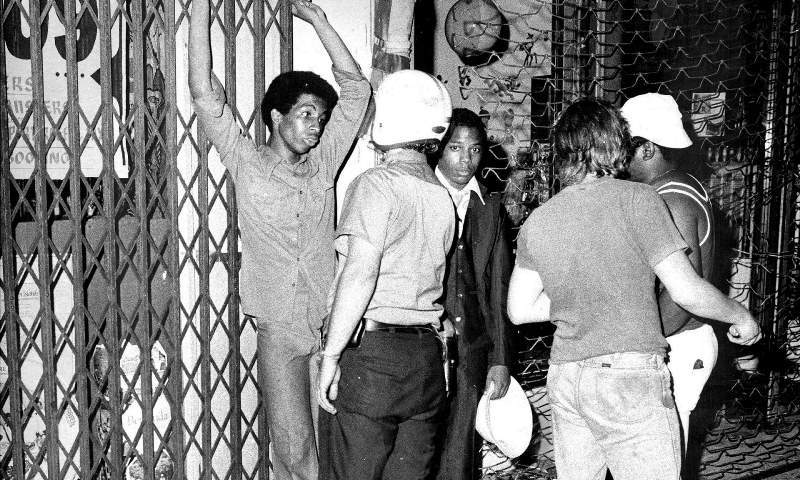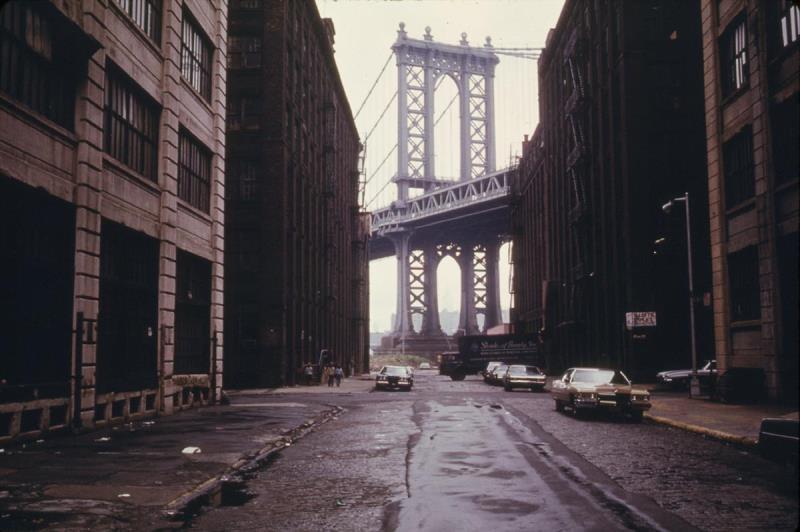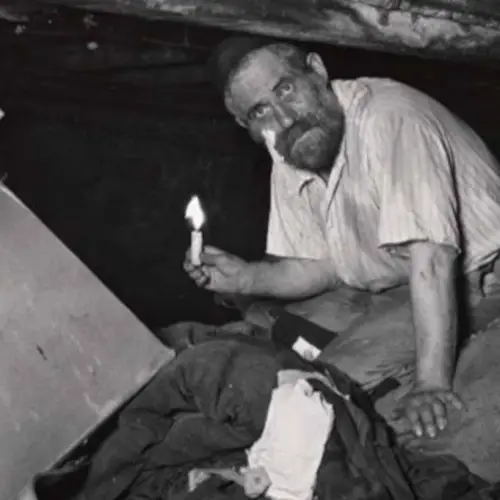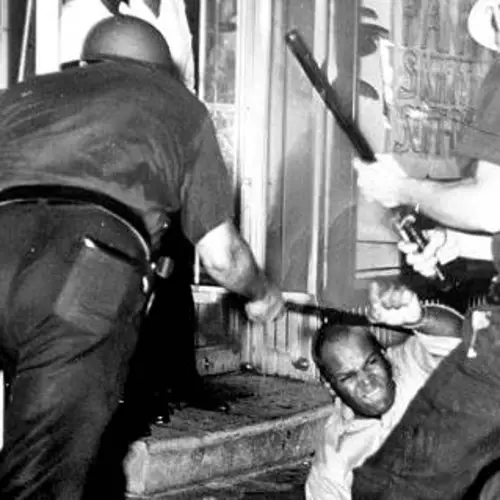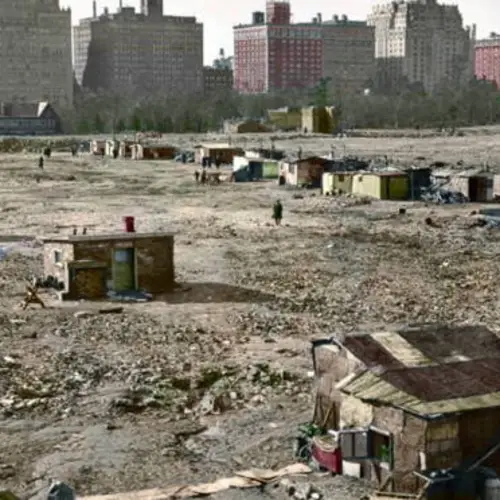2 of 42
Throughout the 1970s, the city teetered on bankruptcy, which was avoided primarily by deep reductions in police, firemen, and teachers. In the above photograph, then Mayor Abe Beame holds a newspaper with the headline 'Ford To City: Drop Dead,' following President Ford's refusal to use federal funds to bail out the city.National Archives and Records Administration
3 of 42
An oil slick surrounds the Statue of Liberty in May 1973.Wikimedia Commons
4 of 42
The grand feat of the decade was the completion of the World Trade Center complex. At the time of its 1973 completion, the Twin Towers were the tallest buildings in the world.National Archives and Records Administration
5 of 42
While the towers grew, much of the city burned. Landlords who could no longer afford to maintain their buildings would occasionally burn them down to collect insurance money.
Here, children in East Harlem returning from school traverse rubble to reach their homes.Camilo José Vergara Photographs
6 of 42
Arson became a major problem in the 1970s in New York, rising from just 1 percent of fires in the 1960s to over 7 percent of fires in the 1970s.The New York Times
7 of 42
To prevent the city government from going into default, significant city-wide cuts were put into place -- one-fifth of all public workers were laid off in 1975 alone. With substantially fewer firefighters and police, many crimes and fires were simply not responded to.National Archives and Records Administration
8 of 42
A group plays cards in a burnt out cafe in the Bronx.National Archives and Records Administration
9 of 42
A child passes a blazing can in Harlem.National Archives and Records Administration
10 of 42
In the summer of 1975, tourists were greeted with this ominous brochure at the airport. It featured nine survival tips for navigating the city, including not taking the subway and not walking in any part of the city after 6 PM.The Guardian
11 of 42
Prostitution became a city-wide problem in the 1970s, with over 2,400 arrests for the offense in 1976 alone. In the above photograph, negotiations take place on the Bowery.Leland Bobbé / Photographer
12 of 42
Before becoming famous for its bars and clubs, the Bowery was known for abandoned buildings and a substantial homeless population.Leland Bobbé / Photographer
13 of 42
New York City became the capital of adult stores with Times Square as its epicenter. As the Guardian wrote, "Times Square’s venerable old theatres and spectacular movie palaces were torn down for office buildings or allowed to slowly rot away, showing scratchy prints of cheesy second-run films or pornography, which any casual visitor might have thought was the city’s leading industry."National Archives and Records Administration
14 of 42
Dilapidated side streets like these were common in 1970s New York.National Archives and Records Administration
15 of 42
People converse in front of the "House of Paradise" in Times Square.Leland Bobbé / Photographer
16 of 42
Once the borough of choice for the middle class, the Bronx bore the full brunt of 1970s white flight. Over the course of the decade, the Bronx lost over 30 percent of its population.Camilo José Vergara Photographs
17 of 42
The Bronx River became an open sewer for industry and humans alike. In fact, it wasn't until 2007 that towns in Westchester and the Bronx both agreed to stop dumping raw sewage into the waterway.Camilo José Vergara Photographs
18 of 42
Passersby look on at a gentleman passed out on the corner of 172nd Street in the Bronx.Camilo José Vergara Photographs
19 of 42
Transportation didn't fare much better than waterways. In the 1970s, the New York subway became jokingly referred to as "the muggers express." By 1979, over 250 felonies were committed every week on the transportation system, making it the most dangerous in the world.Business Insider
20 of 42
An elderly woman plays the accordion for change on the subway.Leland Bobbé / Photographer
21 of 42
A man sits among graffiti in a subway car.The Atlantic
22 of 42
A woman waits for her train.The Atlantic
23 of 42
The exteriors of the subway system were covered in as much grime as the interiors.National Archives and Records Administration
24 of 42
That's not to say that the entirety of 1970s New York is a portrait of misery. Above, boys enjoy the city's water from a fire hydrant on Avenue C in the Lower East Side.Camilo José Vergara Photographs
25 of 42
A group of school boys catches the late afternoon show in the Bronx.Camilo José Vergara Photographs
26 of 42
A group of boys play on the hood of the car in the Bronx in the early 1970s.Camilo José Vergara Photographs
27 of 42
A group participates in a Central Park quilting bee during the summer of 1973.The Atlantic
28 of 42
People observe a number of signs in East Harlem.Camilo José Vergara Photographs
29 of 42
A group of girls share their Barbie collections on the stoop of a brownstone townhouse in Harlem.Camilo José Vergara Photographs
30 of 42
Two young women pose in Harlem.National Archives and Records Administration
31 of 42
Two teenage girls pose for a photograph in Lynch Park, South Williamsburg.National Archives and Records Administration
32 of 42
Elsewhere, a group of teenagers hang out in the South Williamsburg park in 1974.The Atlantic
33 of 42
People celebrate July 4th in Bed Stuy, Brooklyn, 1974.The Atlantic
34 of 42
A Puerto Rican wedding takes place.Camilo José Vergara Photographs
35 of 42
In Harlem, a couple gets married.National Archives and Records Administration
36 of 42
A Bed Stuy resident simply known as "Big Joe" poses for photographer Camilo José Vergara.Camilo José Vergara Photographs
37 of 42
A woman takes a breather in East Harlem.Camilo José Vergara Photographs
38 of 42
Lower East Side residents interact near their stoops.Camilo José Vergara Photographs
39 of 42
An apartment above a pharmacist in Bushwick, Brooklyn, has a revolutionary theme.Camilo José Vergara Photographs
40 of 42
In 1977, New York experienced a 25-hour citywide blackout that led to looting and arson. When all available police were ordered to duty, 40% of the off-duty force refused to show as a result of the escalating animosity between the police union and the city.National Archives and Records Administration
41 of 42
Now home to luxury loft apartments and media agencies, the Brooklyn neighborhood of DUMBO was largely uninhabited for most of the 1970s.The Atlantic
42 of 42
Like this gallery?
Share it:
